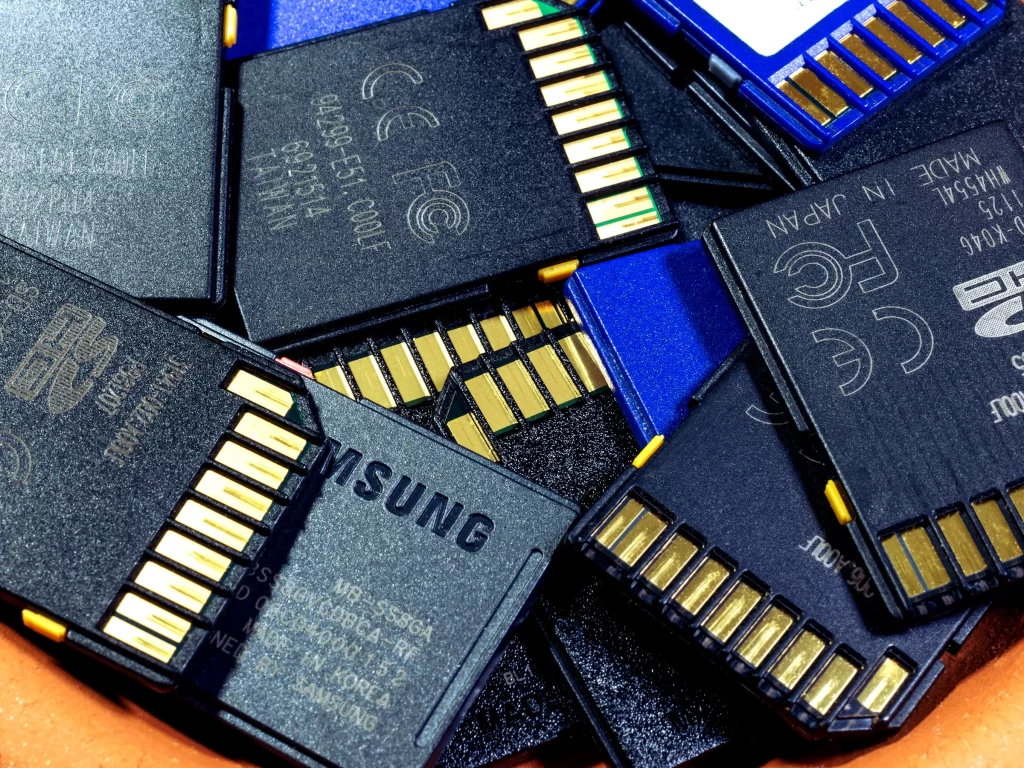
People love capturing and storing memories, it is a daily occurrence, having sufficient storage space is essential. This is where memory cards or storage cards come into play, offering a compact and portable solution to expand the storage capacities of your devices. Whether it’s a smartphone, digital camera, or gaming console, choosing the right memory card is crucial to ensure optimal performance and seamless data management. In this comprehensive guide, you will walk through the process of selecting the perfect memory card for your device.
Memory Cards: The Basics
Before diving into the selection process, you can familiarize yourselves with memory cards and their primary purpose. Memory cards are small, removable devices that store and transfer digital data. They are commonly used in devices such as cameras, smartphones, tablets, and portable gaming consoles to save photos, videos, music, and other files. Storage cards provide the flexibility to expand storage space and conveniently transfer data between devices.
Matching Your Device’s Requirements
When it comes to choosing a memory card, compatibility is key. Different devices require specific types of storage cards to function optimally. Secure Digital (SD) cards and microSD cards are the most common memory card types. It is crucial to check your device’s specifications and identify the supported memory card format before purchasing.
Capacity: Assessing Your Storage Needs
Storage cards come in various capacities, ranging from a few gigabytes (GB) to terabytes (TB). Determining your storage needs is vital to select the appropriate capacity. Consider the types of files you intend to store, such as photos, videos, or music, and estimate the average size of these files. This will help you gauge the amount of storage space required. Choosing a memory card with a slightly higher capacity than you initially anticipated is always a good idea to accommodate future storage needs.
Speed Class: Ensuring Smooth Performance
The speed class of a memory card determines how quickly data can be read from or written to the card. It is especially crucial for devices that require high-speed data transfer, such as cameras recording high-definition videos or smartphones running multiple applications simultaneously. Memory card speed classes are represented by numbers or letters, such as Class 10, UHS-I, or V30. Higher speed classes provide faster data transfer rates, resulting in smoother performance. Assess your device’s requirements and choose a memory card with an appropriate speed class to ensure optimal performance.
UHS Speed Class: Upping the Performance Game
Consider storage cards with Ultra-High-Speed (UHS) Speed Classes for devices that demand even higher data transfer speeds. UHS-I and UHS-II are two commonly available UHS Speed Classes. UHS-II cards offer faster read and write speeds than UHS-I cards, making them suitable for professional photographers, videographers, and enthusiasts who require lightning-fast data transfer. It’s important to note that UHS-II cards are backward compatible with UHS-I devices, providing versatility and future-proofing your investment.
Brand and Reliability: Trustworthy Options
When it comes to storage cards, reliability is paramount. Opting for reputable brands producing high-quality memory cards can significantly reduce the risk of data loss or card failure risk. Brands such as SanDisk, Samsung, Lexar, and Kingston have established themselves as reliable manufacturers. They offer various storage cards with capacities, speed classes, and price points. Investing in a trusted brand ensures a reliable product safeguarding your valuable data.
Price and Value: Finding the Right Balance
Memory card prices vary based on capacity, speed, class, and brand. It’s essential to balance your budget and the value you receive from the memory card. While opting for the cheapest option available may be tempting, remember that compromising quality may lead to slower performance, data loss, or compatibility issues.
Making the Right Choice
Selecting the right memory card for your device is crucial for maximizing storage space and ensuring seamless data management. By considering compatibility, capacity, speed class, brand reliability, and price, you can confidently choose a memory card that meets your device’s requirements and fits your needs. Remember, investing in a high-quality memory card will provide peace of mind, enhance your device’s performance, and enable you to capture and store memories without limitations.
Author Name: Junaid Akbar